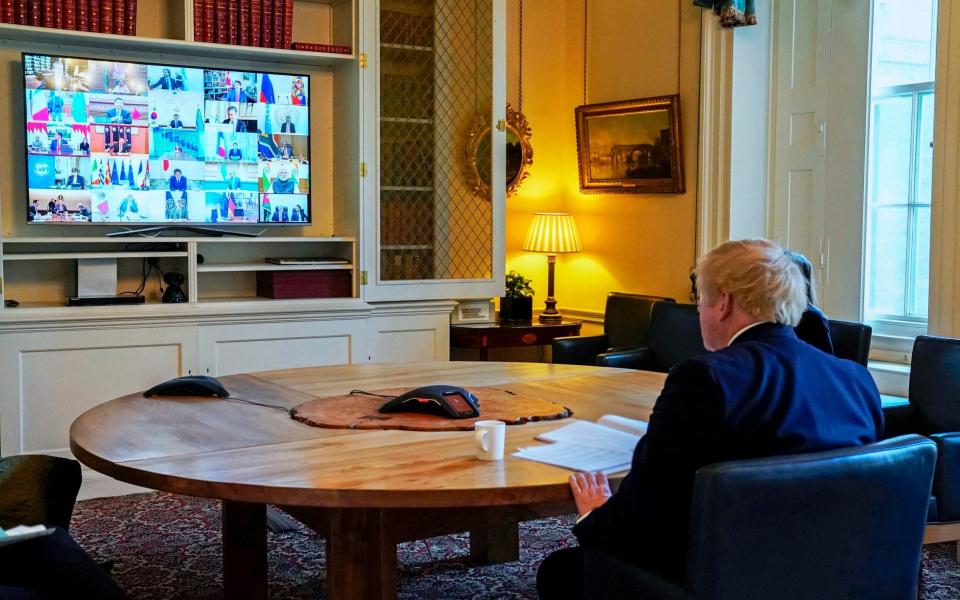How to set up a Zoom meeting safely

An unexpected symptom of coronavirus has been the entrance of alien words and phrases to our vocabulary.
Just weeks ago, saying “I’m zooming my friends”, “zoom-bombing” or “Houseparty hacking” out loud would have raised an eyebrow or two.
But now that more of us are connecting both for business and pleasure on video conferencing services, Zoom has become an integral part of our lives.
There are, however, several risks with using the streaming service.
Zoom has apologised after numerous security bugs, some that allowed hackers to intercept calls, others that share bad links that could steal login credentials. It has paused all new features and tasked its engineers with making sure it is as secure as possible as demand grows.

Perhaps more concerningly, is the phenomenon of aforementioned zoom-bombing, where people join meetings unannounced, often screaming expletives or blasting pornographic images.
The FBI is investigating after a number report's that pupil's Zoom meetings with their teachers were intercepted by pranksters. Several schools are banning the technology because of privacy concerns, and the ease in which students can share the link to access their lessons in the hope that strangers might disrupt teaching.
There are things you can do in advance to make sure that you – and the people you are talking with over Zoom – are protected from hackers or strangers butting into calls.
How Zoom is addressing its problems
Zoom has two main ways to stop anybody butting into meetings, which are now turned on by default after a number of security issues.
All Zoom calls are password protected by default, meaning that even if a stranger stumbles across a meeting's ID – the unique 10-number address for each call – they still won't be able to get in automatically. A hacker would have to know both a meeting's ID and password to enter.
Zoom also allows hosts – the person setting up the call – to share their meetings with a web address, or URL, which allows entry merely by clicking it. This makes it easier to quickly invite people to meetings, but means that meetings can be entered without a password.

It is generally easier to share a link to those you want to Zoom with, but do not spread it widely, by posting on social media, for example.
The second security measure is a feature known as "waiting room", a staging area where people must wait when they join the call. They must be admitted by the host, meaning that if a stranger invades the call, they would not get past the waiting room without permission from the host. This is now turned on by default.
Zoom also recently said meeting IDs would no longer be displayed on the title toolbar.
The company said this was to prevent others seeing active meeting IDs when "Zoom screenshots are posted publicly", and using the information to crash meetings.
A new security menu now allows to update security settings while live in a call for the first time, rather than making meeting hosts set security settings before a call - something critics said was leading to gaps in meeting security and privacy.
How to set up a secure Zoom meeting on your phone or tablet
Tap “new meeting” with the camera icon.
For most people, the Personal Meeting ID (PMI) should be toggled off. A PMI is your unique account number: it means that if you're holding regular meetings with the same group, you're easier to find, but if you're holding a lot of meetings with different people, they may enter at the wrong moment. Toggling it off generates a random ID that only serves for the purposes of that meeting.
Once you press "Start a Meeting" you will be in the call. Then select "Call using Internet Audio". Make sure neither "Mute" or "Stop Video" is selected if you want people to see and hear you.
Tap "More" and then "Meeting Settings" to check your security measures. Make sure that "Put Participant in Waiting room on Entry" is switched on so you can screen who enters. Tap "Done".
To invite people, press "Participants" and "Invite". You can choose to send emails, texts or contacts. Alternatively you can choose "Copy link" if you want to send in an app such as WhatsApp.
When your invitees click the link, they will arrive in the Waiting Room. Press "Participants" again to move them to the call. You can also switch on the “Play chime for Enter/Exit” in Settings so you know when someone is arriving in the meeting.
When everybody is in the call, you can select "Lock meeting" to allow no more participants
How to set up a secure Zoom meeting on your computer
Sign into your Zoom account, either at zoom.us or through the desktop app if you have downloaded it.
Click on "Host a meeting" on the web, or on "New meeting" on the desktop app.
Select "Call using Internet Audio". Once in the call, make sure neither "Mute" or "Stop Video" is selected if you want people to see and hear you.
Tap "Security" to check your security measures. Make sure that "Enable Waiting Room" is switched on so you can screen who enters.
To invite people, press "Manage Participants" and "Invite". You can choose to send an email, or to a Zoom contact. Alternatively you can choose "Copy URL" if you want to share the meeting in another way by pasting it in another app. send in an app such as WhatsApp.
When your invitees click the link, they will arrive in the Waiting Room. Press "Manage Participants" again to move them to the call. You can also switch on the “Play chime for Enter/Exit” in Settings so you know when someone is arriving in the meeting.
When everybody is in the call, you can select "Lock meeting" to allow no more participants
Scheduling a Zoom meeting
If you want to set up a meeting ahead of time, you can schedule one, allowing you to choose your security settings in advance.
On either smartphone, desktop or tablet, click "Schedule" instead of starting a meeting. This generates a menu of settings, which can be tweaked. The default security settings will be switched on, so the main thing you have to do is pick a time.
Once you select "Schedule" or "Done" you will see a box with a big chunk of text, or a calendar event on mobile. That can then be copied and shared as above.
When you want to start the meeting, go to "Meetings" in your app, and select start.
How worried should you be? While governments and businesses conducting classified or confidential business should think twice about using Zoom, it is proving to be a useful way for everyday communication and normal business operations.
“There is always risk associated with using closed source software, Ted Kim, chief executive of Private Internet Access says.
Closed-source means that only the company knows how the software works or if there are hidden back-doors that could allow third parties to intercept calls or recordings made on the app.
Mr Kim adds: "Companies and other organisations need to evaluate whether or not this risk is worth the convenience of using Zoom.
"For those that decide the convenience is worth the risk, following security advice will minimise the chance of unwanted interruptions to the call.”


